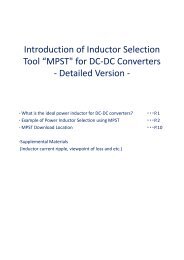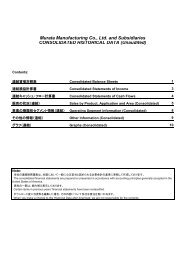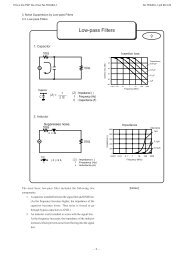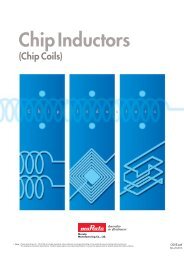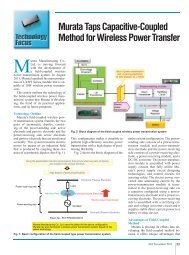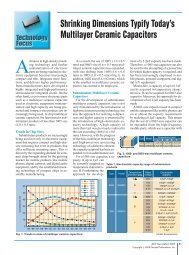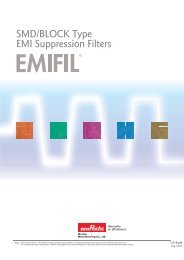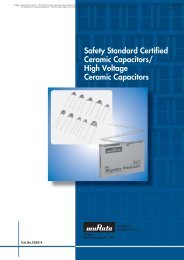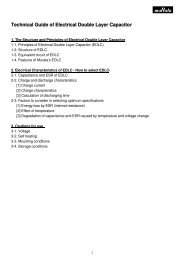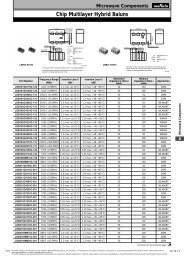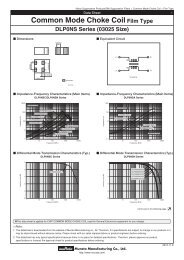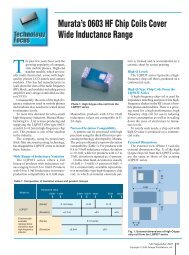PTC Thermistors POSISTOR ® for Circuit Protection - Murata
PTC Thermistors POSISTOR ® for Circuit Protection - Murata
PTC Thermistors POSISTOR ® for Circuit Protection - Murata
You also want an ePaper? Increase the reach of your titles
YUMPU automatically turns print PDFs into web optimized ePapers that Google loves.
!Note • Please read rating and !CAUTION (<strong>for</strong> storage, operating, rating, soldering, mounting and handling) in this catalog to prevent smoking and/or burning, etc.<br />
• This catalog has only typical specifications. There<strong>for</strong>e, please approve our product specifi cations or transact the approval sheet <strong>for</strong> product specifi cations be<strong>for</strong>e ordering.<br />
R90E.pdf<br />
Sep.24,2012<br />
Basic Characteristics of <strong>POSISTOR</strong>r<br />
cBasic Characteristics<br />
<strong>POSISTOR</strong>r has three main characteristics.<br />
1. Resistance - Temperature Characteristics<br />
Although there is a negligible difference between the<br />
normal and "Curie Point" temperature, <strong>POSISTOR</strong>r<br />
shows almost constant resistance-temperature<br />
characteristics. Yet they have resistance-temperature<br />
characteristics that cause resistance to sharply increase<br />
when the temperature exceeds the Curie Point.<br />
The Curie Point (C.P.) is defined as the temperature at<br />
which the resistance value is twice the one at 25°C.<br />
Resistance - Temperature Characteristic<br />
10 5<br />
Resistance Change Ratio, R/R25°C<br />
10 4<br />
BD BC BB AR<br />
10 3<br />
10 2<br />
10<br />
1<br />
0 50 100 150 200<br />
C.P. (AR: 120°C)<br />
Temperature (°C)<br />
2. Current - Voltage Characteristics (Static Characteristic)<br />
This shows the relation between applied voltage when<br />
voltage applied to <strong>POSISTOR</strong>r causes balancing of<br />
inner heating and outer thermal dissipation and stabilized<br />
current. This has both a maximum point of current and<br />
constant output power.<br />
Current - Voltage Characteristic (Static Characteristic)<br />
3<br />
10<br />
Ta=25°C<br />
Current (mA)<br />
2<br />
10<br />
10<br />
1<br />
2<br />
0.1 1 10 10<br />
Voltage (V)<br />
3. Current - Time Characteristics (Dynamic Characteristic)<br />
This shows the relation between current and time be<strong>for</strong>e<br />
inner heating and outer thermal dissipation arrive at<br />
equilibrium state. This features having large initial current<br />
and abruptly continuous attenuating portion.<br />
Current - Time Characteristic (Dynamic Characteristic)<br />
1.5<br />
Ta=25°C<br />
Current (A)<br />
1.0<br />
0.5<br />
Time (sec.)<br />
5




